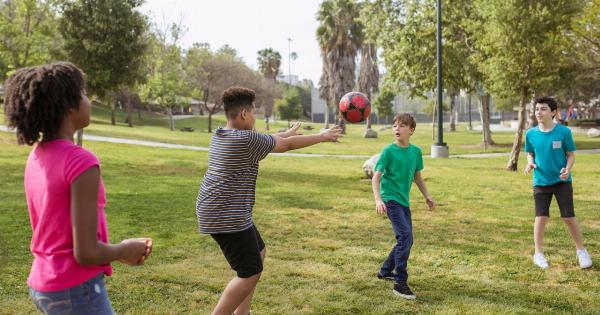Sexual activity among adolescents is a topic of great concern and interest. Adolescence is a crucial period of development marked by significant physical, emotional, and social changes.
During this time, many adolescents explore their sexuality and engage in various sexual activities. This article aims to provide a statistical analysis of sexual activity among adolescents, including the prevalence, age of initiation, risk factors, and potential consequences.
Prevalence of Sexual Activity among Adolescents
Several studies have examined the prevalence of sexual activity among adolescents. According to the National Survey of Family Growth, approximately X% of adolescents between the ages of 15 and 19 have engaged in sexual intercourse at least once.
This indicates that sexual activity is a relatively common behavior among teenagers in the United States.
Age of Initiation
One crucial aspect to consider is the age at which adolescents initiate sexual activity. Research suggests that the average age of first sexual intercourse is around X years old.
However, it is essential to acknowledge that there is considerable variation in the age of initiation, with some adolescents engaging in sexual activity earlier or later than others.
Factors Influencing Sexual Activity
Several factors can influence sexual activity among adolescents. These factors include both individual and environmental determinants. Individual factors may include psychological traits, attitudes towards sex, and peer influence.
Environmental factors can encompass family dynamics, cultural norms, and access to comprehensive sexual education.
Consequences of Early Sexual Activity
Engaging in sexual activity at an early age can have various consequences. One significant concern is the increased risk of unintended pregnancies and sexually transmitted infections (STIs).
Adolescents who initiate sexual activity early are less likely to use contraceptives consistently and correctly, putting them at higher risk of these adverse outcomes.
Sexual Education and its Impact
Adequate sexual education plays a crucial role in promoting healthy sexual behaviors among adolescents.
Research suggests that comprehensive sexual education programs can effectively delay the initiation of sexual activity and increase the likelihood of contraceptive use. It is essential for schools and parents to provide accurate and age-appropriate information to teenagers to help them make informed decisions about their sexual health.
Gender Differences in Sexual Activity
Studies have also explored gender differences in sexual activity among adolescents. While both male and female adolescents engage in sexual activity, research indicates that males are more likely to initiate sexual intercourse at an earlier age.
Additionally, societal norms and expectations may contribute to differences in sexual behaviors and attitudes between genders.
Psychological Impact of Sexual Activity
Engaging in sexual activity can have psychological implications for adolescents. It is essential to consider factors such as emotional well-being, body image, and self-esteem when examining the impact of sexual activity on adolescent mental health.
Open communication and support systems are crucial for adolescents to navigate these challenging aspects of their sexual development.
Parental Influence and Communication
Parental influence and communication play a vital role in shaping adolescents’ sexual behaviors.
Adolescents who have open and honest communication with their parents about sex are more likely to delay sexual initiation and engage in safer sexual practices. Parents should strive to create a safe and non-judgmental space for discussions surrounding sex and relationships.
Online Sexual Activity and Technological Influence
The advent of technology and the internet has brought about new challenges in understanding sexual activity among adolescents. Online sexual activity, such as sexting and accessing explicit content, has become increasingly prevalent.
It is crucial for parents, educators, and policymakers to address the implications of these technological advancements and provide guidance to adolescents on responsible online behavior.
Conclusion
Understanding sexual activity among adolescents requires a comprehensive analysis of prevalence, age of initiation, influencing factors, and potential consequences.
By examining these aspects, policymakers, educators, and parents can better tailor their approaches to promote healthy sexual behaviors and provide adequate support to adolescents during this critical phase of their development.






























